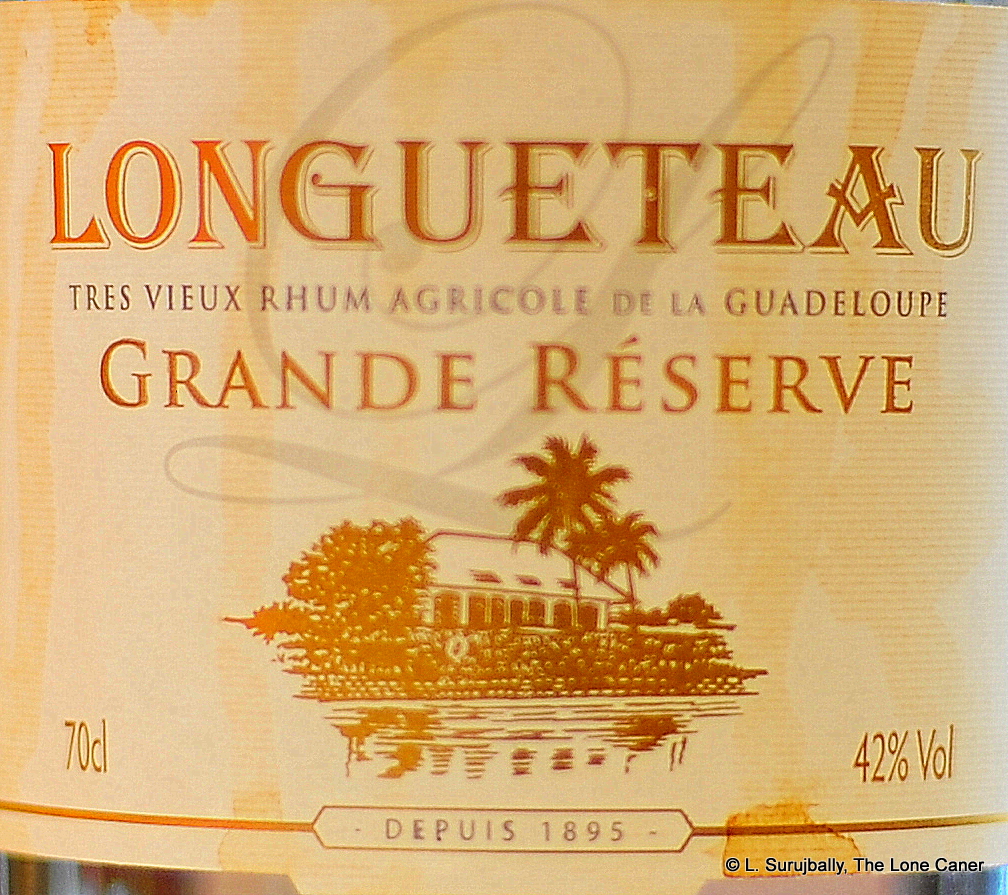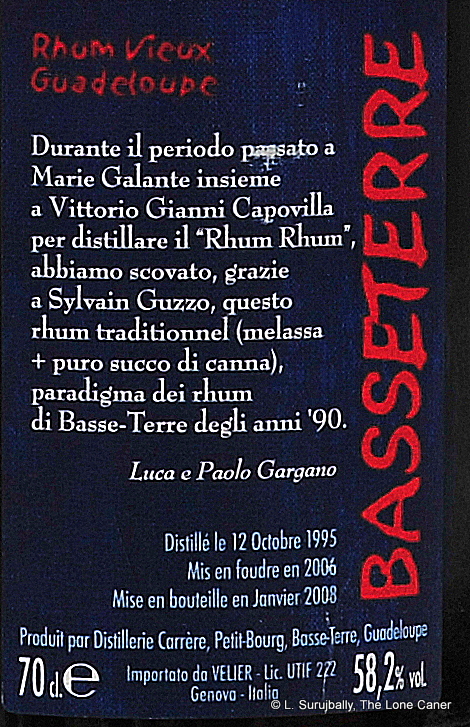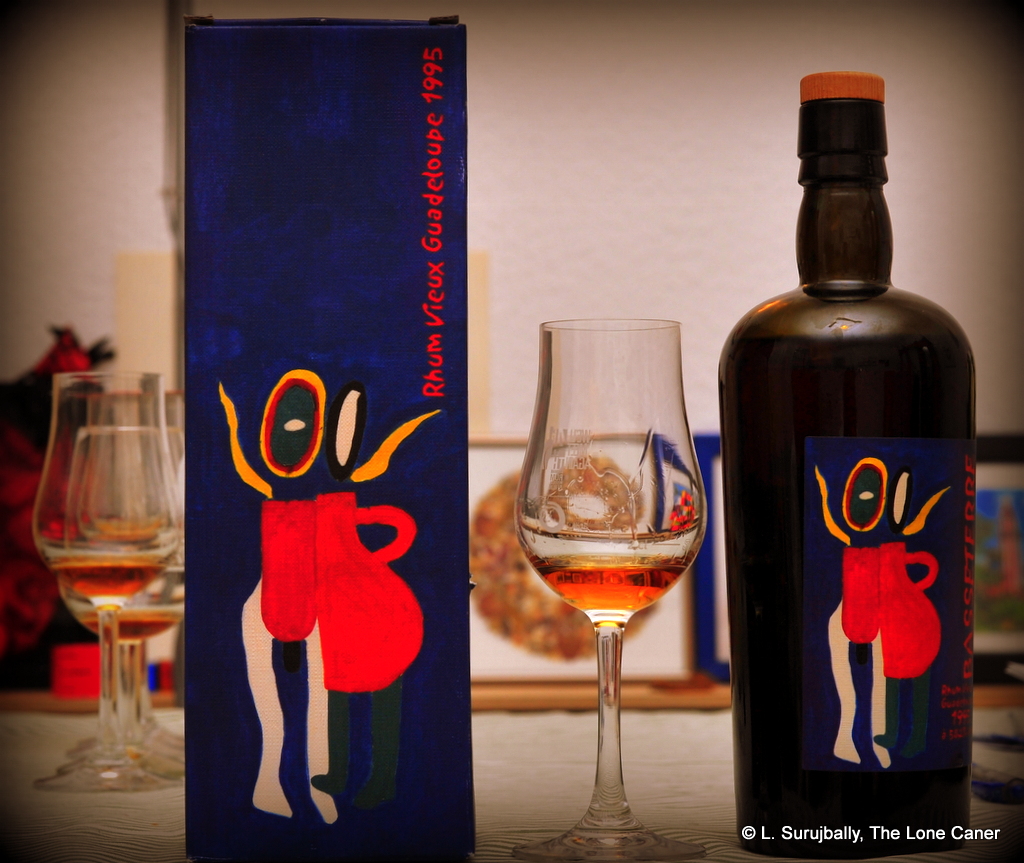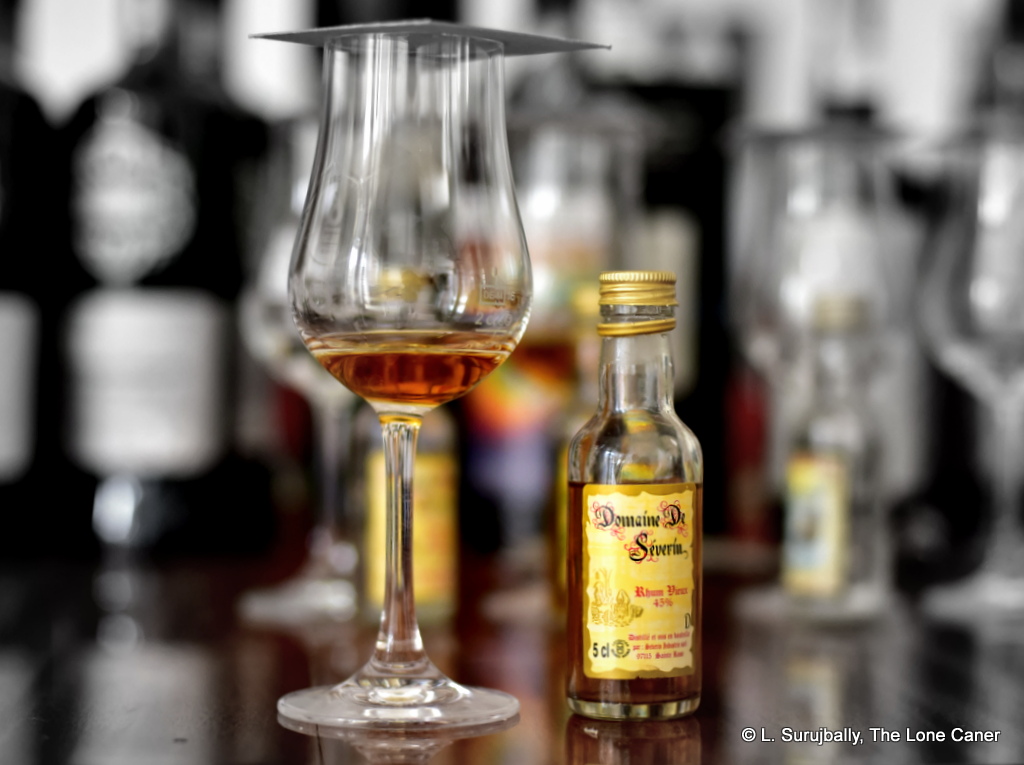
Rumaniacs Review # 094 | 0610
Séverin is a small distillery in the north of the left “wing” of Guadeloupe (called Basseterre), whose history can be divided into three parts: 1800-1928 when different owners held the small estate and grew various agricultural crops like pineapples and sugar, 1928-2014 when the Marsolle family held it and created the marque of Domaine de Séverin for their rhums, and the post-2014 period when the distillery (but not the whole estate) was sold to a local businessman called Jose Pirbakas. Although there was a cessation of operations after the takeover due to differences in management and operational philosophies (for one thing, all rhum prices were jacked up by 45% in 2014), rhums from Séverin are now once again available, primarily in France, and sporting a new, redesigned bottle and label.
That label is key, since the older ones such as on the bottle I had, are no longer in use and therefore serve as a useful determinant as to whether one is buying a pre-takeover rum (which is a Rumaniacs candidate), or a post 2014 version, which is not.
While it is not explicitly stated on the label, the Vieux is about three years old. Séverin have always played around with different casks in their aged rhums (cognac for the most part), but in this case it is very likely that standard oak barrels were used to age the rhum, which itself derives from a creole column still.
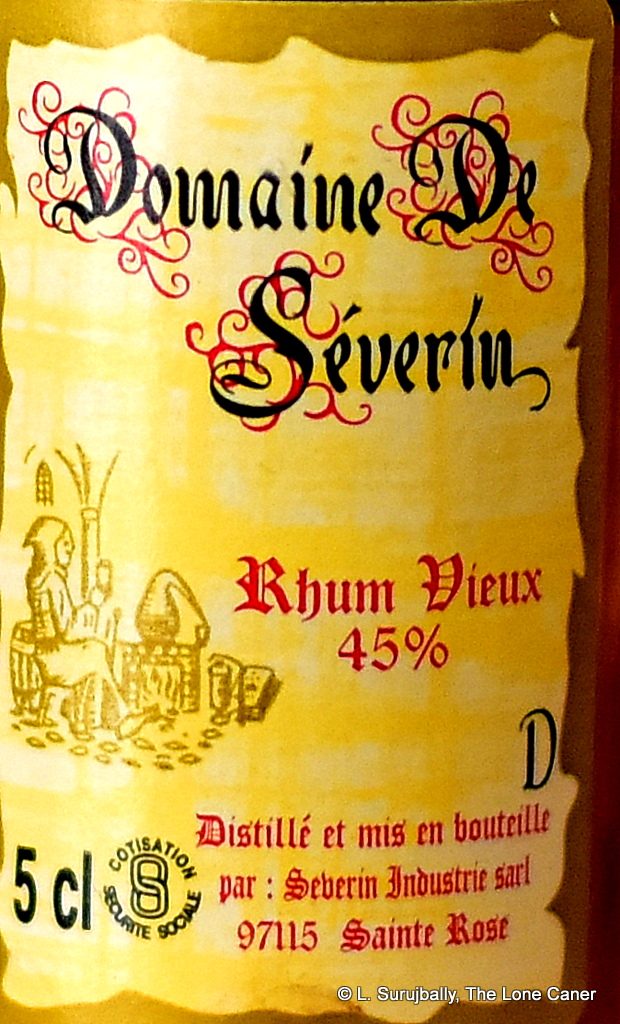 Colour – Gold
Colour – Gold
Strength – 45% ABV
Nose – Clearly Séverin, like many producers on Guadeloupe, played around with both molasses and cane juice for its raw material. Here, the deeper aromas of molasses, coca-cola and nougat steer us towards molasses as the base. There were hints of cinnamon and light coffee grounds, some smoke and vanilla, quite easy-going but also reasonably aromatic.
Palate – A very pleasing profile, if not quite as sharply distinct as anything you’re getting from Martinique with its strict AOC guidelines. Coke, molasses, bitter chocolate and nougat charge out from the gate. There is also some brine, olives and coffee, and coiling around in the background are some vague floral and light fruity notes which provide a pleasing backdrop for the heavier flavours
Finish – Somewhat weak, a flash in the pan, over quickly. Closing notes of cumin and cinnamon, caramel, damp brown sugar, vanilla.
Thoughts – Reminds me somewhat of rums from Mauritius or the Seychelles. I like these indeterminate products that steer an interesting line between a pure molasses product and one made from juice – it’s like they take a bit of the characteristics both without leaning to either side too much. That makes them good rums to drink, though this one is not so exceptional that I’d want it on my top shelf. Still, it was made recently enough that I suspect one can still find it, and if so, it’s worth picking up for more than just historical value.
(80/100)
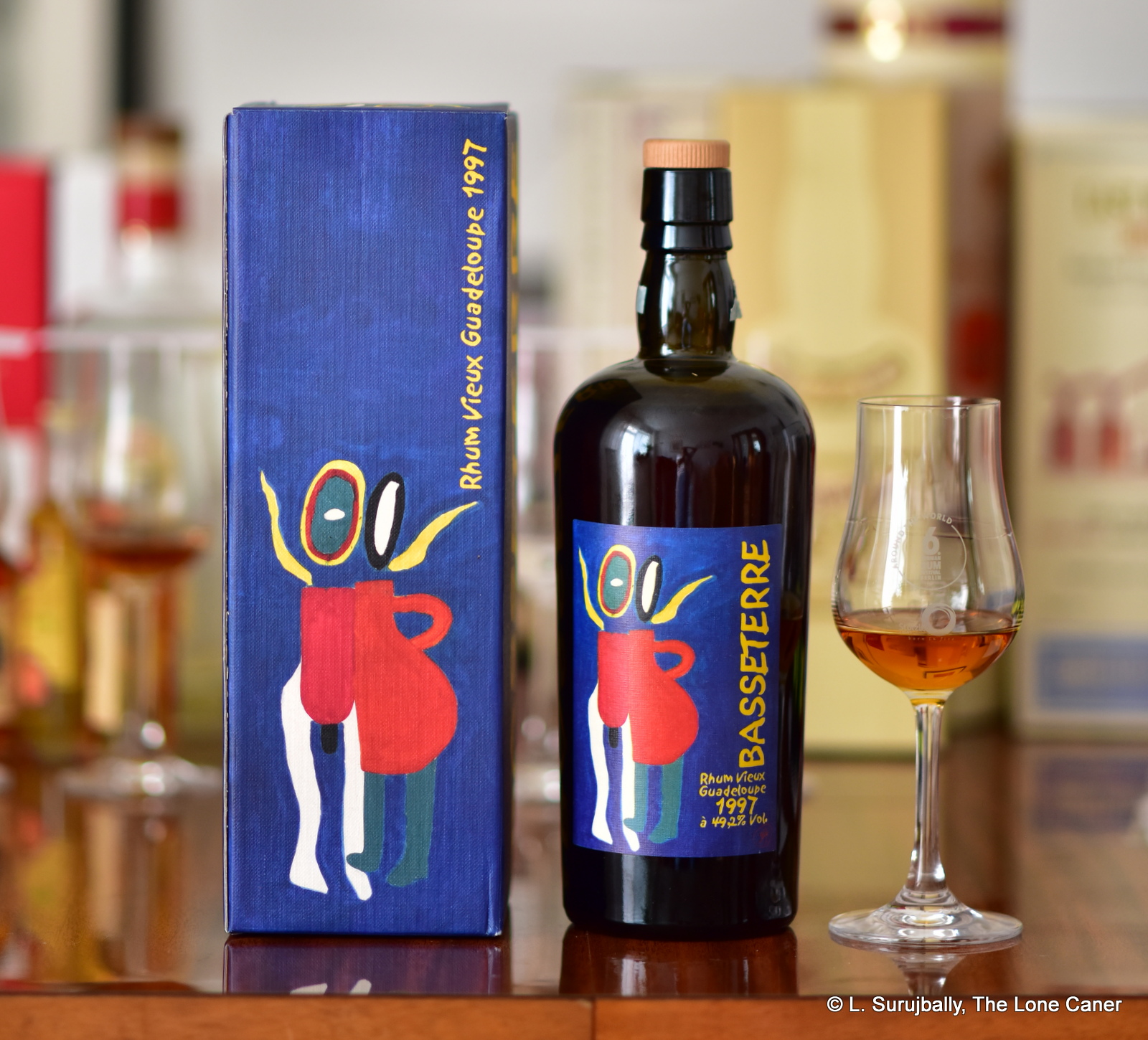
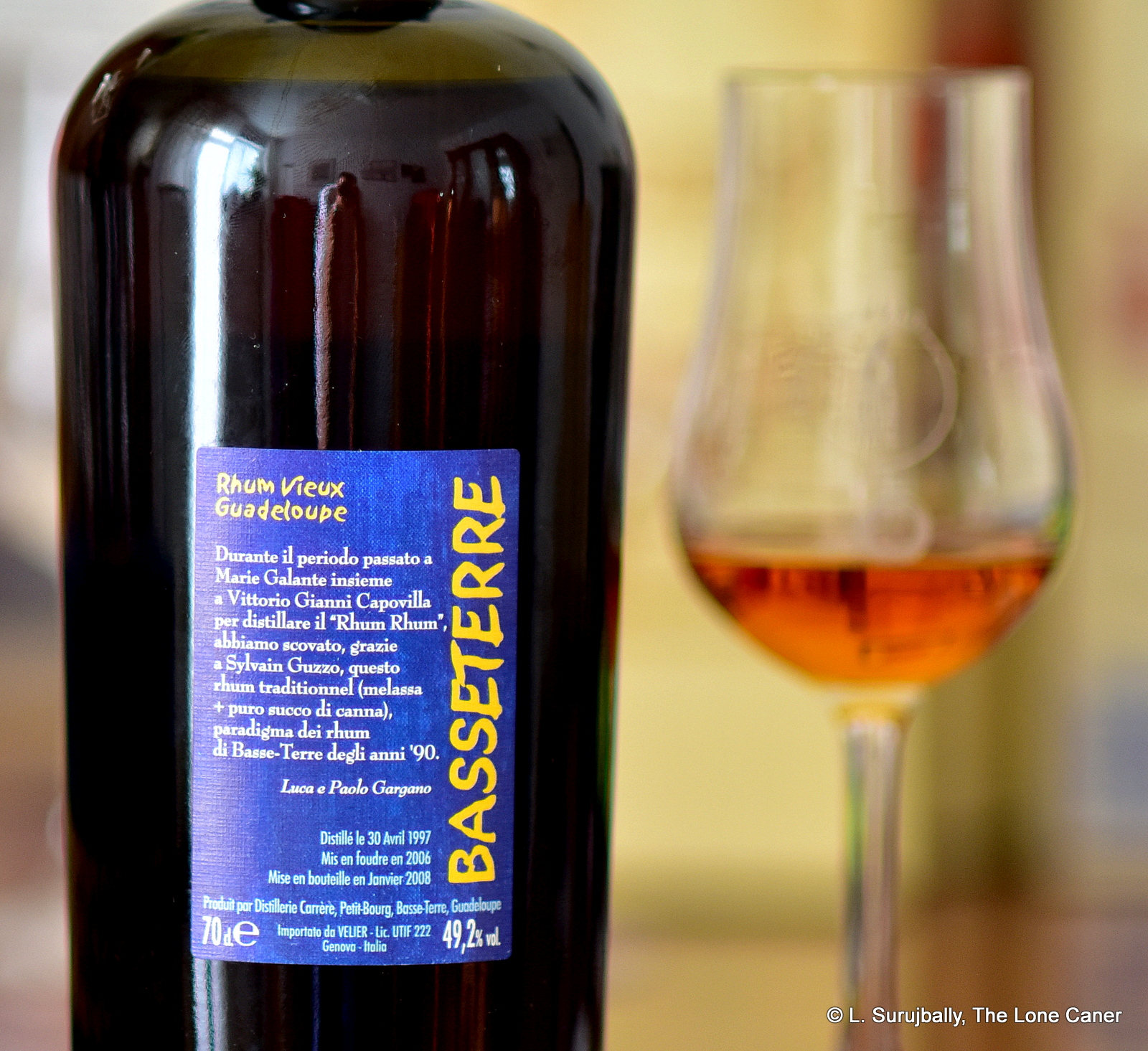 Anecdotes aside, what have we got here? A Guadeloupe column-distilled 49.2% ABV rhum from the Carrere Distillerie more commonly called Montebello, located just a little south of Petit Bourg and in operation since 1930. Curiously, it’s a blend: of rhum agricole (distilled from cane juice) and rhum traditionnel (distilled from molasses). Aged…well, what is the age? It was put in oak in 1997 then taken out of the barrels in 2006 (again, just like the 1997 edition) and placed in an inert vat until 2008 for the two divergent strains to marry. So I’m calling it a nine year old, though one could argue it sat for 11 years even if it was just twiddling its thumbs for two. And as noted above, there’s a reason why Sylvain’s name is on the back label, so now you know pretty much the same story as me.
Anecdotes aside, what have we got here? A Guadeloupe column-distilled 49.2% ABV rhum from the Carrere Distillerie more commonly called Montebello, located just a little south of Petit Bourg and in operation since 1930. Curiously, it’s a blend: of rhum agricole (distilled from cane juice) and rhum traditionnel (distilled from molasses). Aged…well, what is the age? It was put in oak in 1997 then taken out of the barrels in 2006 (again, just like the 1997 edition) and placed in an inert vat until 2008 for the two divergent strains to marry. So I’m calling it a nine year old, though one could argue it sat for 11 years even if it was just twiddling its thumbs for two. And as noted above, there’s a reason why Sylvain’s name is on the back label, so now you know pretty much the same story as me. 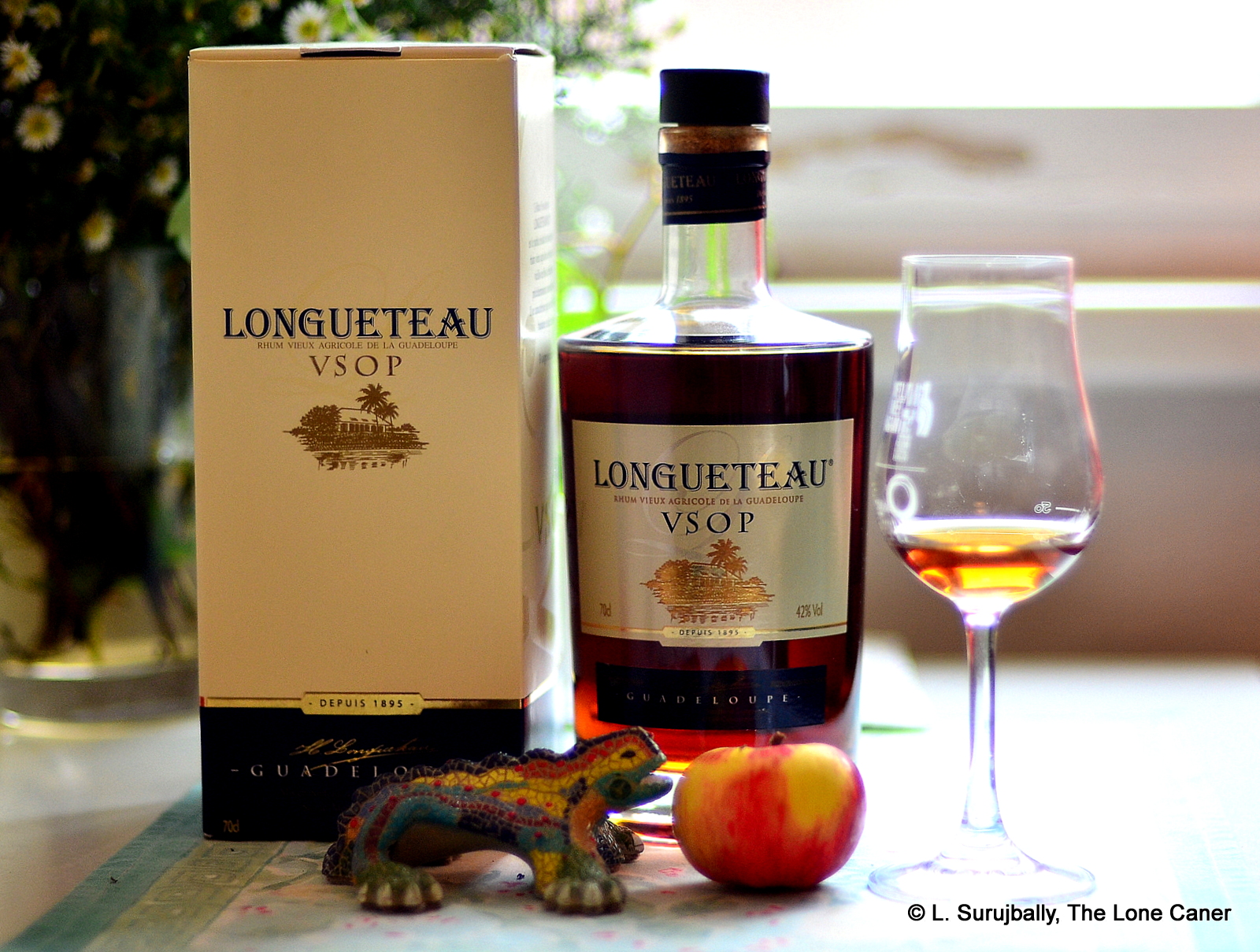

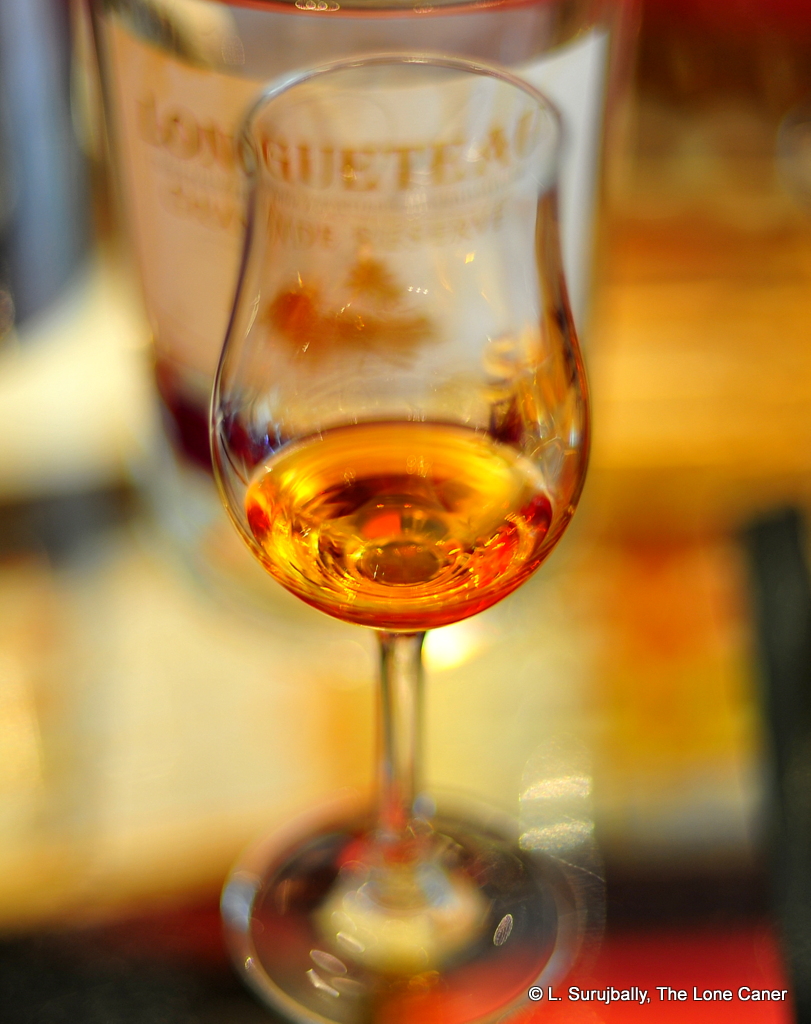 This dark orange-gold ten year old began well on the nose: phenols, acetone, caramel, sweet red licorice, wet cardboard, it gave a good impression of some pot still action going on here, even though it was a column still product. Then there was some fanta or coke — some kind of soda pop at any rate, which I thought odd. Then cherries and citrus zest notes, blooming slowly into black olives, coffee, nuttiness and light vanilla. As a whole, the experience was somewhat easy due to its softness, but overall it was too well constructed for me to dismiss it out of hand as thin or weak.
This dark orange-gold ten year old began well on the nose: phenols, acetone, caramel, sweet red licorice, wet cardboard, it gave a good impression of some pot still action going on here, even though it was a column still product. Then there was some fanta or coke — some kind of soda pop at any rate, which I thought odd. Then cherries and citrus zest notes, blooming slowly into black olives, coffee, nuttiness and light vanilla. As a whole, the experience was somewhat easy due to its softness, but overall it was too well constructed for me to dismiss it out of hand as thin or weak.